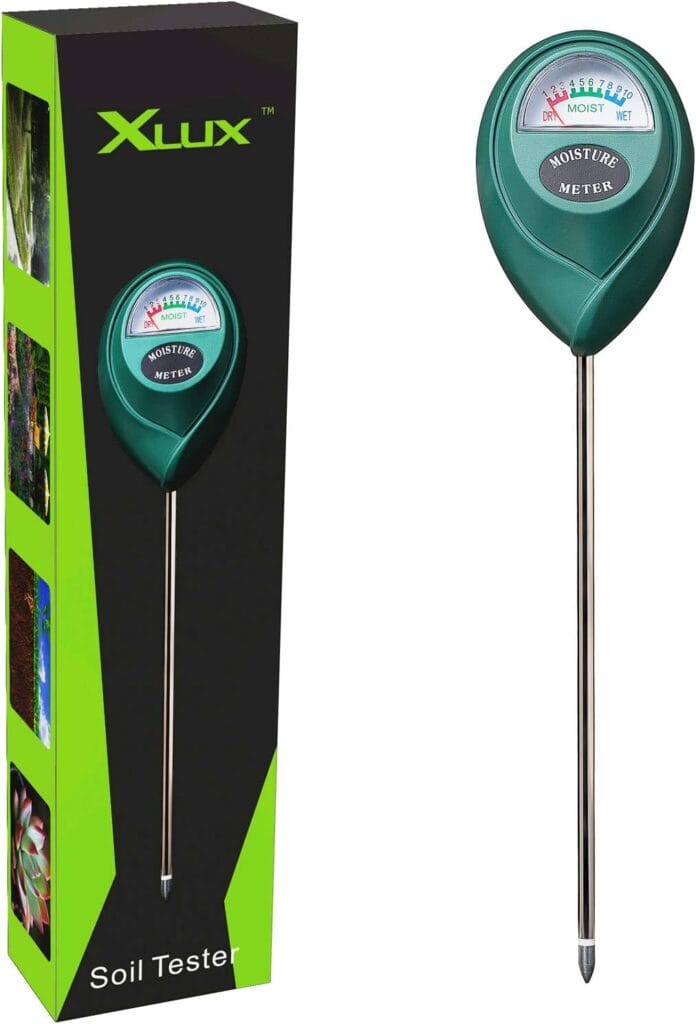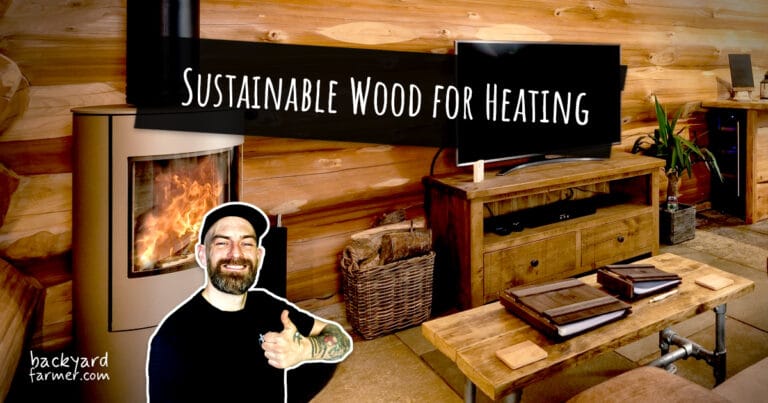Table of contents
Introduction
Heating your home with sustainable firewood UK can be a cosy, affordable, and eco-friendly choice — but only if you do it right. In the UK, there are clear rules to follow, environmental impacts to consider, and practical steps that make a big difference.
Why It Matters
- Rising energy costs: Using seasoned logs or kiln-dried wood can be a cost-effective way to reduce heating bills.
- Cleaner air: Burning wet logs gives off thick smoke and dangerous particulates, while dry, seasoned wood cuts pollution.
- Legal rules: From Ready to Burn wood UK certification to smoke control area wood burning regulations, staying compliant keeps you safe and avoids fines.
When choosing sustainable firewood UK, it helps to know the best places to source logs responsibly. For more, see our guide to finding free and cheap firewood near you.
What You’ll Learn
- How to source sustainable firewood responsibly, from coppiced woodland to eco firewood suppliers UK.
- Clear tips on how to season firewood UK for efficient burning.
- The difference between kiln dried vs seasoned wood UK and when each works best.
- How to get the most heat while lowering smoke and fuel waste.
- Simple ways to reuse wood ash in the garden.
Who This Guide Helps
- Rural homeowners with large stacks of logs to season and store.
- Eco-conscious gardeners making use of storm-fallen wood or arborist offcuts.
- Urban stove users working within smoke control area wood burning rules.
By the end, you’ll know how to choose the best wood for burning UK, hit the moisture content firewood UK target of 20% or less, and even recycle ash. Together, these steps turn a traditional fuel into a smarter, more sustainable heating option for modern homes.
UK Rules: Ready to Burn & Smoke Control Areas
Burning firewood in the UK isn’t just about staying cosy — it also means following the law and protecting local air quality. Here’s a clear breakdown of the main Ready to Burn rules and what they mean for everyday wood burners.
Ready to Burn Certification
- If you’re buying logs in loads under 2 m³, they must be certified under the Ready to Burn wood UK scheme.
- To qualify, firewood must have a moisture content firewood UK of 20% or less.
- Certified bags will display the Ready to Burn logo and a supplier ID so you know the logs are legal and safe to burn.
Larger Deliveries
- Bigger loads, over 2 m³, don’t require official certification.
- However, suppliers must give clear guidance on how to season firewood UK and store it properly before use.
Smoke Control Areas
- Living in a smoke control area wood burning zone means stricter rules apply.
- You can only burn logs in a Defra-approved Ecodesign stove UK or stick to authorised fuels.
- Burning wet wood or using a non-approved stove can lead to fines and smoky complaints from neighbours.
Why Compliance Matters
- Health: Dry, seasoned, or kiln-dried logs release less smoke and fewer harmful particulates (PM2.5).
- Efficiency: Damp logs waste energy and give off less heat per log.
- Safety: Wet wood encourages creosote build-up, raising the risk of chimney fires.
For full details, see the official DEFRA Ready to Burn rules.
In short: Stick to Ready to Burn wood UK standards and respect smoke control area wood burning regulations. You’ll enjoy cleaner fires, more heat, and peace of mind knowing you’re burning responsibly.
Sustainable Firewood Sourcing
Choosing firewood isn’t only about heat — it’s also about where the wood comes from and how it’s managed. When you choose sustainable firewood sourcing UK, you help protect woodlands, support local suppliers, and reduce your carbon footprint.
Coppice & Pollard Cycles
- Traditional methods like coppicing firewood UK and pollarding create a renewable supply of logs.
- Because trees regrow after cutting, these practices support biodiversity and keep woodlands healthy.
Arborist & Storm-Fallen Wood
- Local arborists and tree surgeons often have offcuts or waste wood available.
- After storms, storm fallen wood collection UK can be a great way to source logs — just make sure you have permission first.
- Always double-check ownership, safety, and local regulations before taking wood home.
Local Suppliers & Certified Wood
- Buying from local suppliers cuts down transport emissions and supports your community.
- Look for FSC certified firewood UK to guarantee the wood has been harvested responsibly.
- Many eco firewood suppliers UK also offer kiln dried logs delivery UK, which is ideal if you don’t have the space or time to season logs yourself.
Eco Logs vs Firewood
- Eco logs (compressed sawdust or biomass briquettes) are consistent, dry, and easy to store.
- They can be a cleaner choice in towns and cities, especially when paired with an Ecodesign stove UK.
- Compare eco logs vs firewood for cost, convenience, and heat output to see which option fits your needs best.
Bottom line: By choosing sustainable options, you’ll reduce your impact on the environment while keeping a safe, reliable, and legal supply of the best wood for burning UK.
Seasoning & Moisture Control
Seasoning means drying out your logs so they burn hotter, cleaner, and more efficiently. In the damp UK climate, getting this step right is essential — not only for saving money but also for staying compliant with the Ready to Burn wood UK rules.
How Long to Season Firewood
- Softwood: Usually ready in 6–12 months if stacked properly.
- Hardwood: Needs around 18–24 months, sometimes longer depending on species.
- Always aim for a moisture content firewood UK level of 15–20% before you burn.
Storing Firewood the Right Way
- Split logs early to expose more surface area and speed up drying.
- Stack off the ground to prevent dampness and improve airflow.
- Cover the top but leave the sides open so rain stays out but moisture can still escape.
Checking Moisture Levels
- The most accurate method is a firewood moisture meter UK.
- Always test the freshly split face of a log for the most reliable reading.
- Other signs of seasoned logs: lighter weight, cracks on the ends, and a hollow ring when you knock two logs together.
Mini-Review: Best Moisture Meters for Firewood
Budget Pick – Pin-Type Moisture Meter
Affordable, straightforward, and quick to use. Great if you only burn occasionally and want peace of mind.
Approx. £20–£30
Mid-Range Pick – Pin + Pinless Combo Moisture Meter
Combines scanning and pin testing. More accurate and faster for larger stacks of logs. Ideal for regular burners who want reliability.
Approx. £80–£120

XLUX Soil Moisture Meter (26cm Probe)
Price: ~£8.49 (Amazon UK)
Brand: XLUX
Type: Freestanding, no batteries required
Why We Like It:
- Accurate readings – instantly shows if your soil is dry, moist, or wet.
- Large, easy-to-read dial – colour-coded zones with 10 scales.
- Immediate results – no waiting, just insert and check.
- Gentle on roots – single probe design causes less damage.
- No batteries needed – simple, reliable, and always ready to use.
Bottom line: By learning how to season firewood UK-style and testing with a meter, you’ll meet the Ready to Burn rules, reduce smoke, and enjoy efficient, cleaner-burning fires.
Efficient Burning & Smoke Reduction
Even well-seasoned logs can smoke and waste heat if you don’t burn them the right way. The good news is that with the right stove, smart burning habits, and regular upkeep, you’ll get more warmth while keeping pollution to a minimum.
Use Modern Ecodesign Stoves
- Since January 2022, every new stove sold in the UK must meet Ecodesign standards.
- These modern appliances cut emissions by up to 80–90% compared with open fires or older models.
- If you live in a smoke control area wood burning zone, check your stove is both Defra-approved and compliant with Ecodesign stove UK regulations.
Burn Hot and Clean
- Start with kindling: Dry sticks help the fire catch quickly and reduce smoke.
- Maintain airflow: Keep vents open until the fire is fully established.
- Avoid slumbering fires: Smouldering logs create more smoke, waste fuel, and encourage creosote build-up.
Keep Your Stove & Chimney Maintained
- Sweep your chimney or flue regularly to remove soot and creosote deposits.
- Check stove seals and glass often so the appliance runs at maximum efficiency.
- Regular maintenance lowers fire risks, boosts performance, and extends the life of your stove.
Key takeaway: Pair seasoned logs with an Ecodesign stove UK and follow efficient burning practices. You’ll meet the Ready to Burn rules, reduce smoke pollution, and enjoy hotter, longer-lasting fires.
Ash Reuse in the Garden
When the fire burns out, don’t just sweep the ash away — it can be a valuable resource in the garden if you use it correctly. Adding wood ash garden use into your routine is a simple way to recycle nutrients and support sustainable living.
Benefits of Wood Ash
- Packed with potassium and calcium, which help strengthen plants and improve soil structure.
- Acts as a mild liming agent to reduce soil acidity.
- Supplies trace minerals that enhance compost quality and overall soil health.
How to Use Wood Ash Safely
- Sprinkle lightly over compost heaps to balance acidity and feed microbes.
- Apply in small amounts directly to soil around neutral or alkaline-loving plants.
- Avoid using on acid-loving crops such as blueberries, rhododendrons, and azaleas.
Safety Notes
- Only use ash from untreated, clean firewood — never from painted, stained, or chemically treated wood.
- Always let ash cool completely before handling or spreading.
- Store in a dry container until you’re ready to use it.
Key takeaway: By putting wood ash garden use into practice, you’ll cut waste, recycle nutrients, and close the loop on sustainable firewood sourcing UK in a way that benefits both your garden and the environment.
Frequently Asked Questions
The Ready to Burn wood UK certification confirms that logs sold in loads under 2 m³ contain 20% moisture content or less. Certified bags will show the Ready to Burn logo and a supplier ID so you know the firewood meets the legal standard for clean burning.
– Softwood: About 6–12 months if stored properly.
– Hardwood: Roughly 18–24 months, depending on species and conditions.
To be certain, always check with a firewood moisture meter UK before burning. This ensures you meet the how to season firewood UK guidelines.
Yes, but only in a Defra-approved Ecodesign stove UK or by using authorised fuels. Burning wet wood or using a non-approved appliance in a smoke control area wood burning zone can result in fines and heavy smoke.
Both are suitable if logs are under 20% moisture. Kiln dried vs seasoned wood UK often comes down to preference:
– Kiln-dried logs are consistent, dry, and quick to use.
– Seasoned logs are usually cheaper and more eco-friendly if sourced locally.
The target is 15–20% moisture content firewood UK. At this level, wood burns hotter, cleaner, and more efficiently, producing less smoke and creosote build-up.
Use a firewood moisture meter UK on the freshly split face of a log. Aim for readings between 15–20%. Other signs of seasoned logs include:
– Lighter weight
– Cracks at the ends
– A hollow sound when two logs are knocked together
Conclusion
Heating your home with logs can be one of the most rewarding ways to stay warm — but it only works if you do it legally, efficiently, and sustainably. By following the Ready to Burn wood UK regulations, keeping moisture content firewood UK levels at 20% or less, and using a modern Ecodesign stove UK, you’ll enjoy hotter fires with less smoke and cleaner air.
Choosing the Right Wood
The best wood for burning UK isn’t just about heat output. When you buy from FSC certified firewood UK suppliers, collect storm fallen wood, or use coppicing firewood UK methods, you keep firewood part of a sustainable woodland cycle. Combine that with proper seasoning, safe storage, and a reliable firewood moisture meter UK, and every burn will be efficient, safe, and fully legal.
Don’t Waste the Ash
And don’t forget — the fire doesn’t end with the flames. Adding wood ash garden use into your routine lets you recycle nutrients, balance soil, and close the loop on your sustainable firewood sourcing UK journey.
Final takeaway: By bringing these practices together, you’ll turn a traditional heating method into a smarter, eco-friendly system — one that saves money, reduces smoke, and supports a healthier future for UK households.





